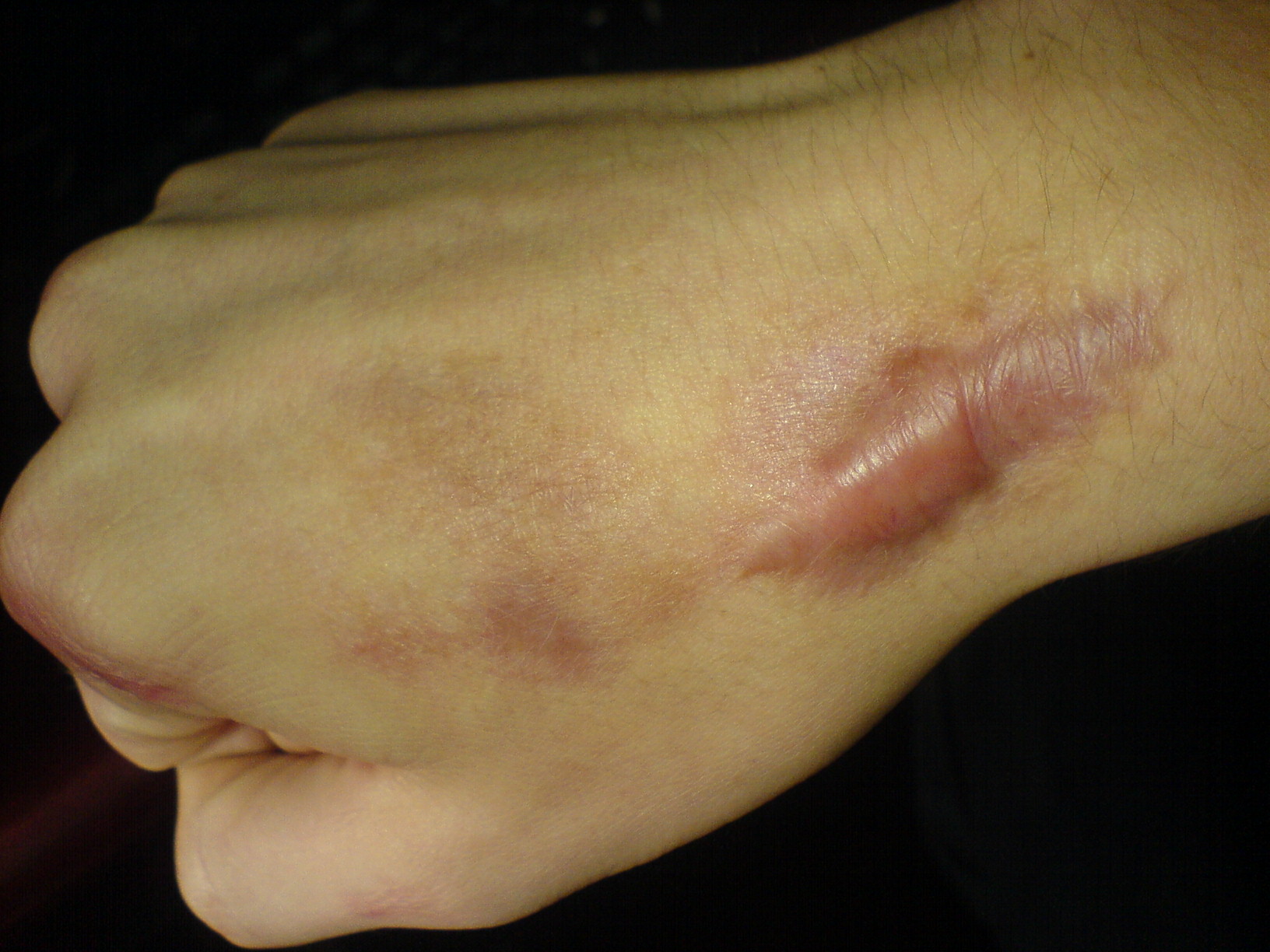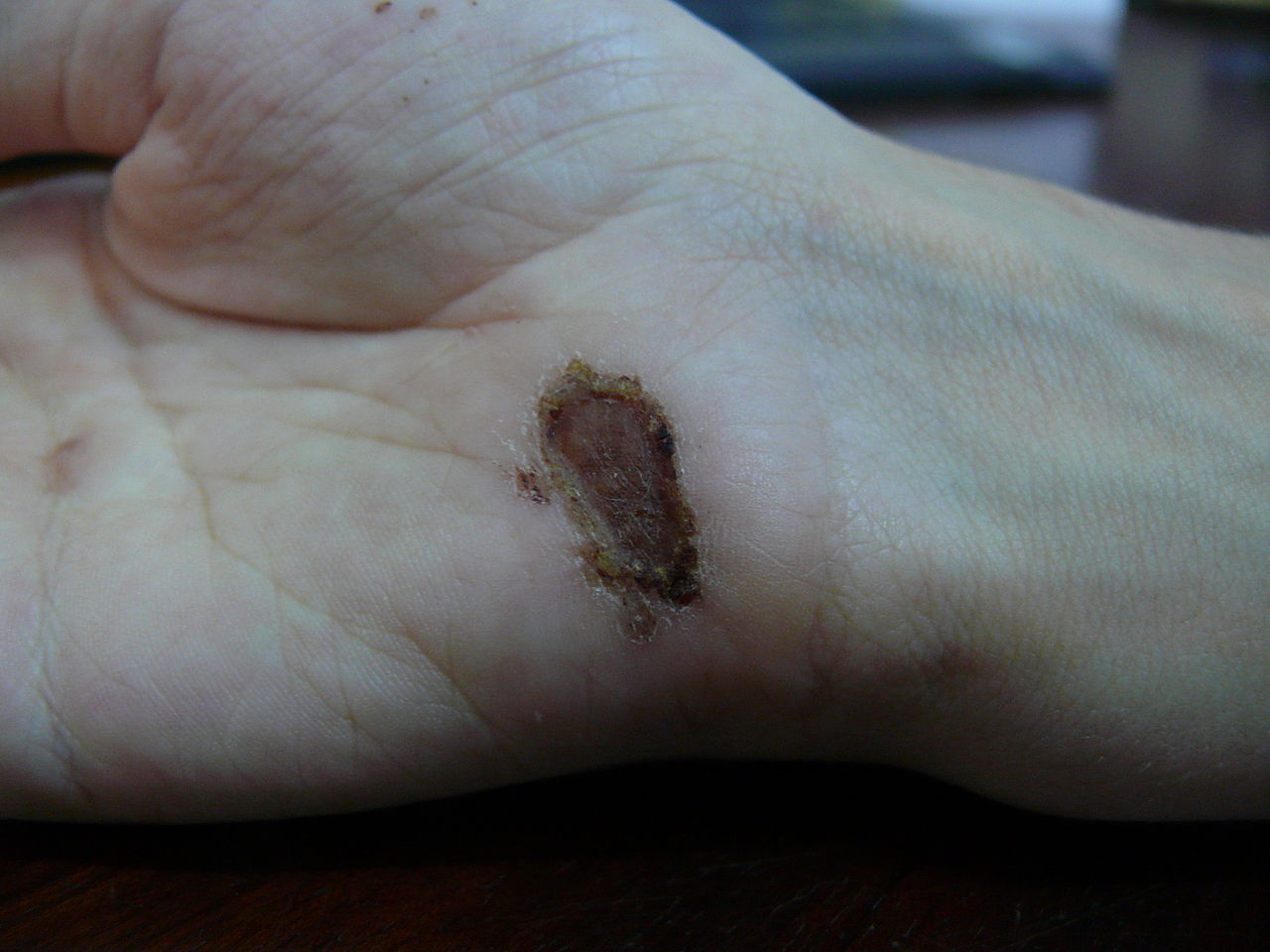Playlist
Show Playlist
Hide Playlist
Injury in Non-regenerating Tissue
-
Slides Acute and Chronic Inflammation Deposit and remodel matrix.pdf
-
Download Lecture Overview
00:01 So the general overall picture that you need to keep in your mind when we're talking about injury in non-regenerating tissues, or when there's a lot of damage, is if we're gonna have scarring, we're gonna have fibrosis. 00:12 So the first panel there we see ourselves, we see an area of injury where cells have died. 00:18 And we have lost some degree of matrix around that area, or some blood vessels. 00:23 Okay. 00:24 We then recruit in neutrophils first and then macrophages so that we get the tissue breakdown and set the stage for the subsequent healing responses. 00:33 In these tissues that cannot regenerate, we get angiogenesis, we get granulation tissue. 00:37 So we're seeing the sprouting from those vessels into the area of injury. 00:42 Being recruited those new vessels by the macrophages that are in there. 00:48 And then on that provisional matrix on those railroad tracks, we bring in fibroblasts that proliferate, migrate, and lay down new matrix. 00:57 So we get ECM extracellular matrix deposition. 01:01 And it's a combination of increased synthesis, and decreased degradation because we are inhibiting matrix metalloproteinases. 01:09 In a minute, we're also going to see the next stage where that scar changes, it's not just always going to be that big lump of fibrosis in the middle, it's going to remodel. 01:19 But this paradigm is extremely stereotypical. 01:24 And it happens in any tissue that cannot completely regenerate. 01:30 And it's going to be kind of a major underlying process that will occur in a lot of pathologies. 01:36 So we will revisit this in other guises. 01:38 But this is a very stereotypical response in any healing injury. 01:44 Okay, so, in non-regenerating tissues, the principal mediators in scarring, first of all, we have the tissue breakdown and macrophage activation, and that's through interferon gamma. 01:57 We get neutrophils, we get macrophages, we get licensable enzymes, we get reactive oxygen species. 02:03 And then we get angiogenesis, driven by basic FGF, and VEGF, all the activities of by those two factors. 02:11 and more, but those two factors, mainly. 02:13 Fibroblasts need to migrate, and proliferate. 02:16 This is going to be growth factors, epidermal growth factor, interleukin-1 and TNF. 02:22 They're going to deposit matrix through increased synthesis of matrix and decreased degradation and that's driven by TGF-beta. 02:31 And then we're gonna have inhibition of cellular activation, we're gonna put a brake on the entire process. 02:37 And again, really importantly, that's TGF beta. 02:41 So on this one slide, we've kind of summarized the important factors that you need to kind of keep in mind.
About the Lecture
The lecture Injury in Non-regenerating Tissue by Richard Mitchell, MD, PhD is from the course Acute and Chronic Inflammation.
Included Quiz Questions
Which of the following mediators promotes the deposition of the extracellular matrix?
- TGF-β
- IFN-alpha
- VEGF
- bFGF
- EGF
Customer reviews
5,0 of 5 stars
| 5 Stars |
|
5 |
| 4 Stars |
|
0 |
| 3 Stars |
|
0 |
| 2 Stars |
|
0 |
| 1 Star |
|
0 |





